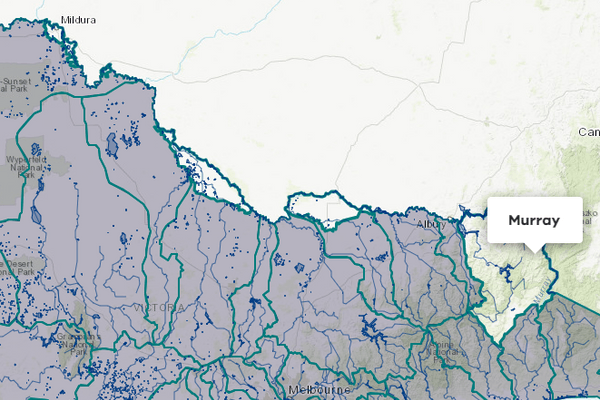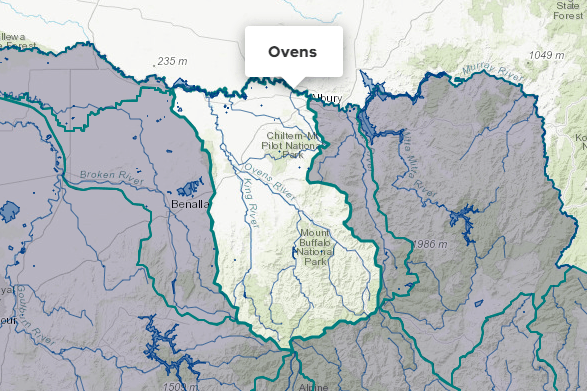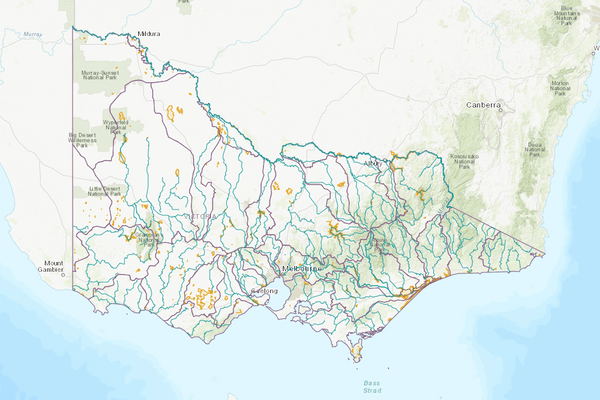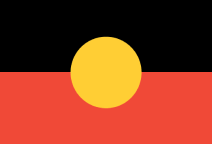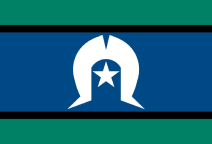About the area
The Kiewa River originates from the Bogong High Plains and flows northwards across approximately 100 km in northern Victoria. It eventually merges with the Mitta Mitta River, to join the Murray River.
Precipitation within the basin primarily takes the form of rain, with snowfall occurring above 1,400 m during winter. Annual rainfall averages range from below 900 mm in the northern areas to over 1,800 mm at Mount Bogong in the southern headwaters.
Water resources in the Kiewa basin serve various purposes, including power generation, agriculture, and meeting urban needs.
More information on water management and accounting is detailed in Water explained.
2023-24 overview
Available water
Catchment inflow was lower than the previous year.
Licensed diversion restrictions
There were more restrictions on licensed diversions than the previous year.
Water use
Slightly less water was diverted for consumptive purposes than the previous year.
When compared to the previous year, in 2023-24:
- less rainfall was received and catchment inflow was lower
- storages finished the year at lower levels
- there were more restrictions on licensed diversions from streams
- slightly less water was diverted from the basin for consumptive uses.
Climate
Rainfall
In 2023-24, rainfall across the entire Kiewa basin was below the long-term average. This was lower than the previous year when rainfall was very much above average across the entire basin.
Figure 1 displays the rainfall received in 2023-24 compared to the long-term average (1975-2024).
Figure 1: Rainfall deciles, Kiewa basin
Sourced from the Australian Bureau of Meteorology
River basin water balance
This section describes the known and estimated inflows, outflows and change of storage volumes in the basin.
More detail on major on-stream storages, catchment inflows, diversions and small catchment dams can be found in the sections below the water balance.
The volume of water flowing out of the Kiewa River into the Murray basin represented 93% of the Kiewa basin’s total inflows.
Water balance table
The table below shows the total volumes of water available and supplied from water resources in the Kiewa basin in 2023-24.
Table 1: Water balance, Kiewa basin
Major on-stream storages
Major - greater than 1,000 ML - on-stream storages in the Kiewa basin are included in the water balance. Volumes in off-stream storages are presented for additional information about the resource condition.
Storage levels
Storage levels were 49% in June 2024.
Lower than the previous year
In June 2023, storage levels were 83% full.
Table 2: Storage levels, Kiewa basin
Inflows
Catchment inflow
Catchment inflow represents the volume of water flowing into the waterways of a basin. It is calculated as the total outflows and change in storage minus the known inflows. The long-term average inflow presented has been updated from the previous Victorian Water Accounts, as detailed in Water Explained. The updated long-term average inflow has been applied to this year and the previous year’s volume in this report.
Below average inflow of 561,085 ML was received (83% of the long-term average of 675,900 ML), less than the previous year (181% of the long-term average).
Below average inflow received
Catchment inflow was 83% of the long-term average of 675,900 ML.
Less water received than the previous year
Catchment inflow was lower than the previous year (181% of the long-term average).
Wastewater treatment plants
Water treated at wastewater treatment plants can be used to supplement water available in the basin. Water discharged to waterways from treatment plants is included as an inflow to the water balance.
Information on treatment plants is reported in the water supply local reports for the water corporation responsible for managing the plant.
In this basin, wastewater treatment plants are managed by East Gippsland Water and North East Water.
Outflows
Diversions
In 2023-24, 9,199 ML of water was diverted for consumptive uses: town, domestic and stock, irrigation and commercial supply. This was slightly less than the 10,555 ML diverted in the previous year. While a slight decrease in use was reported, urban and licensed diversions were slightly higher than the previous year. The overall decrease in consumptive use was due to the 2,555 ML decrease in the estimate of small catchment dam use volume.
Small catchment dams
Water harvested, used and lost by small catchment dams (farm dams) is included in the water balance.
Table 3: Small catchment dams, Kiewa basin
Entitlements and compliance
Entitlements provide the basis for how water is shared in the basin.
Consumptive diversions under bulk entitlements are assessed against the Murray-Darling Basin annual cap target for the Murray-Kiewa-Ovens Valley. Details of this assessment are published annually in the MDBA’s cap register and annual water take report.
Since 2019-20, the consumptive diversions are also assessed against the annual permitted takes under the Murray-Darling Basin Plan Sustainable Diversion Limit (SDL) compliance reporting which are annually published in the MDBA’s SDL accounts register of take and the Inspector-General of Water Compliance’s SDL compliance statement.
Entitlement volumes
Rights to water in the Kiewa basin are shown in Table 4.
Entitlement volumes represent a maximum volume of water that can be taken in a one-year period. The volume available in a particular year is dependent on the rules for allocating water set out in the entitlement and the seasonal conditions in that year, which can vary. The rules for allocating water under an entitlement differ between entitlements and systems. This affects the ability and likelihood of water being taken in a particular year.
Table 4: Annual entitlement volumes at 30 June, Kiewa basin
Available water and take under entitlements
Total water available under entitlements represents the volume of water that was available to be taken by entitlement holders in 2023-24. The volume includes carryover from the previous year, seasonal allocations and net trade into the basin.
Water taken under entitlements
There was 7,385 ML taken under entitlements in 2023-24, about the same as the previous year (7,544 ML).
Restrictions on licensed diversions from streams
- There was a peak of 8 streams banned or restricted in March 2024 compared to only one ban on diversions from Bight Creek, during the previous year.
- All other streams were unrestricted during the year.
Available water and take table
This table shows the volume of available water and the volume taken under entitlements in 2023-24.
More information on available water and take has been detailed in How we account for surface water.
In 2023-24, about the same amount water was taken under entitlements as the previous year.
Table 5: Available water and take under entitlements, Kiewa basin
Compliance
Compliance against water entitlements is reported for this basin in 3 areas:
- entitlement issued: that the volume of entitlements issued in a basin does not exceed formal caps, and has not increased without appropriate approvals
- water taken: that the volume of water taken during the year does not exceed the volume considered to be available for consumptive and/or in-stream use during that year
- bulk entitlement provisions: that holders of entitlements do not breach any provisions that are documented in their bulk entitlement orders.
Total entitlement volume
There was an allowed net increase in the total entitlement volume from the previous year (5 ML). See note below.
Total volume diverted
The total volume diverted under entitlements (7,385 ML) was within the volume available for the year (20,388 ML).
Individual bulk entitlements
No individual bulk entitlement holder took more than the annual volume made available to them.
Exceptions to compliance
Individual bulk entitlement holders complied with all provisions in their entitlements.
Note to increase in total entitlement volume:
- During 2023-24, a take and use licence entitlement volume was increased by 18 ML to correct a prior data error, and one licence was cancelled by the customer (13 ML).
Water for the environment
Environmental watering sites
There are no environmental entitlements in the Kiewa basin, so no active environmental watering occurs.
However, important sites and environmental values in the Kiewa basin that depend on water for the environment include:
- threatened remnant vegetation and Murray cod in the reaches of the West Kiewa River and lower Kiewa River
- nationally significant Alpine wetlands, known as the Alpine sphagnum bogs and associated fens.
Water from the Kiewa basin also flows into the Murray basin, helping to maintain environmental assets in that basin.
Environmental water reserve
In 2023-24, water for the environment in the Kiewa basin comprised:
- water set aside for the environment:
- through flow-sharing arrangements
- through the operation of passing flow conditions on consumptive bulk entitlements held by North East Water and AGL Hydro Ltd
- through the operation of passing flow conditions on licensed diversions
- all other water in the basin not allocated for consumptive uses: this water also provides social, recreational and cultural benefits.
Management responsibilities
Management of water in the Kiewa basin is undertaken by various parties
| Authority | Management responsibilities |
|---|---|
| AGL Hydro |
|
| Goulburn-Murray Water |
|
| North East Catchment Management Authority |
|
| North East Water |
|
| Water supply system | 2022-23 (ML) | 2023-24 (ML) |
|---|---|---|
| Mount Beauty system | 371 | 350 |
| Yackandandah | 150 | 183 |

